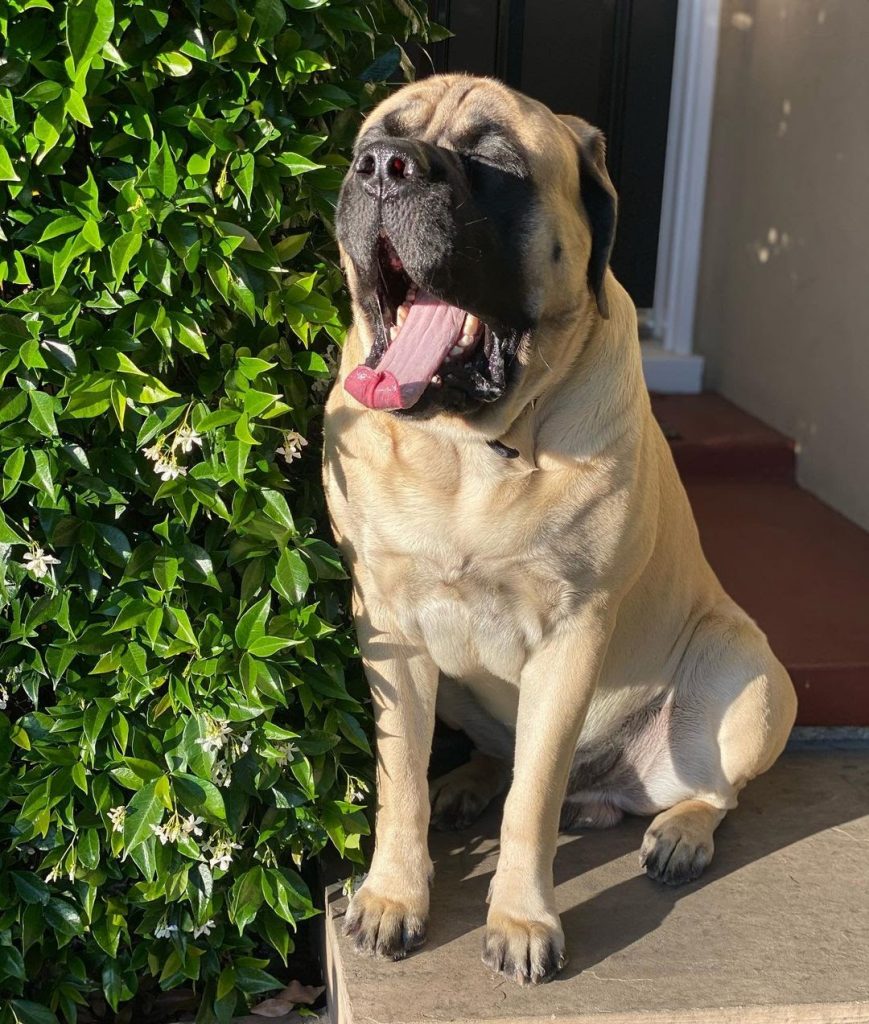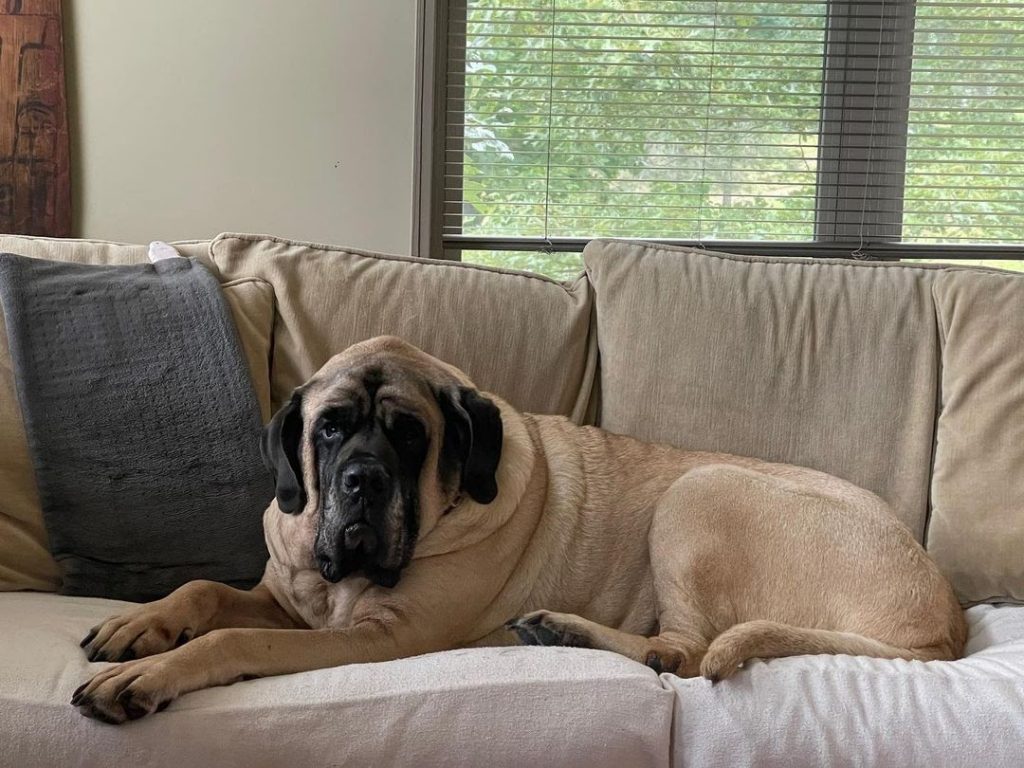English Mastiff vs American Mastiff: How to Tell Their Differences


Do you have a penchant for large dogs? If you have done the search and have come down to deciding between an English Mastiff (EM) and the American Mastiff (AM), we will help you see their differences.
Both dogs share the same ancestry and generally, the looks as well. However, with a keen eye for detail, you’d realize that they are quite different overall. Both gentle giants are popular in American households who are fond of owning enormous pets while some resort to smaller breeds their homes can accommodate.
Whichever Mastiff you get, know that they would need a great amount of space in your home or apartment. Plus, it would seem like bringing home a human-sized dog as an addition to your family. There are other kinds of Mastiffs out there, but surely, these two are the most commonly sought out.
Table of Contents
The History of Both Dogs
It is worth mentioning first that the Mastiff isn’t a breed at all. Instead, this is an umbrella term that includes other dogs of similar sizes and nature. Other Mastiffs are the Great Dane, the Tibetan Mastiff, Neapolitan Mastiff, and the Cane Corso.
Anyhow, let’s discover how the English and American Mastiffs started as colossal canines.
English Mastiff


The modern EM was developed in England but its ancestor called the Molosser is believed to come from Tibet or Northern India. This forefather of several massive dog breeds has a solid build with heavy bones and a short muzzle- features that are evident in today’s Mastiffs and other breeds such as St. Bernard and the Rottweiler.
Mastiff-like dogs have existed for approximately a millennia as canines of the same size were depicted in several historical records. Moreover, documents tell us that they have been used for war, entertainment, and security purposes.
Later on, the EM arrived in England and they became estate guards and patrol dogs at night. Despite the several times this dog almost got extinct due to the banning of dog fights as well as the two World Wars, the large canine thrived back. It then came to the United States during colonial times and became an official breed in 1885.
American Mastiff


The AM is considered to be a new dog developed 20 or 25 years ago by Fredericka Wagner of Piketon, Ohio. Although this came about just recently, its lineage can be traced back many centuries ago through the two breeds used to create this Mastiff.
The AM is simply an EM whose line was introduced, later on, with the Anatolian Shepherd’s genes. The Anatolians are not far from being related to Molossian Hounds and were, therefore, used to improve or recreate the EM’s features.
The Mastiff notoriously drools uncontrollably due to how his mouth is formed and can leave a trail every time he walks. Once the Anatolian gene has been incorporated, the AM becomes the result without the annoying drool. Not that there is no drool at all, but the amount is lesser than that of an EM.
The Continental Kennel Club recognized this dog as a purebred in 2000. Recognition was almost at hand for the AM through the American Kennel Club (AKC), but the American Mastiff Breeders council objected to it for regulation purposes.
What Are Their Physical Differences?
English Mastiff


The EM is bulky and has a tight, powerful, and heavy body. He is considered to be the largest canine but it is not based on his height at withers. It is his weight that makes him an enormous dog as this breed reached a world-breaking record of 343 pounds with a length of 8’3 feet.
Anyhow, the ideal maximum weight for an EM is 230 pounds.
His structure is well-built and sturdy with a distinctly large square-shaped head. His eyes are deeply set and are available in one color only- brown. His ears are v-shaped and are set on the sides of his huge head making them appear smaller.
At his forehead, the wrinkles are very prominent. His muzzle is short and much darker compared to the rest of his face and body. His lips hang down the jaw and are very loose which makes him very prone to dribble.
Lastly, the forelegs are straight and strong while the hind legs are wider and muscular. The tail sets high on the root and tapers in the end. Coat colors are cream, fawn, and brindle.
American Mastiff


By appearance, the AM is less bulky than the EM. However, the lean appearance doesn’t mean that he is also less heavy. AMs can weigh 200 pounds and some can surpass that mark. In some instances, they may even become bigger than the EM.
While the AM generally shares the same features as the original English Mastiff, some differences are worth noting. The AM has a kinder look with a longer muzzle and lesser wrinkles appearing on the forehead.
While the EM has a square-shaped head, the AM is described to have a rectangular one with the same floppy set of ears and a black nose. The one specific feature that most sets him apart from his counterpart is his mouth. His lips are tighter, less prone to salivate, yet reports tell us that they have become dry.
The body remains solidly athletic and muscular, with a thick neck and a straight back. His legs are also powerfully matched with great paw pads to support the upper body. The EM’s renowned black mask and brown eyes are retained to display a mysterious look and the tail is whip-like and tapering at the tip.
The possible coat colors are fawn, brown, and brindle and another eye color can be seen on the AM which is amber.
Who Has a Better Temperament?
Aggression
Both dogs are not aggressive by nature, but they can be. It all depends on the kind of training they get while they are growing up or if a situation calls for it. The EM and the AM are loving dogs who have a gentle disposition. They are also loyal and committed to their owners and will not hesitate to jump in circumstances wherein their family members are being threatened by a suspicious person.
With their stature and ability to take down a lion, it would be foolish for a total stranger to deal with these large dogs. It would also be a bad decision if a robber ends up breaking into a home with either kind of Mastiff guarding the house.
Affection
With proper socialization training, both Mastiffs excel well in being affectionate dogs. When it comes to their families, they would love to bond and spend most of their time with them. Sometimes, they would forget about their massive sizes and try to lay on your lap. They always adore a good cuddle!
With kids, supervision is still necessary. Nevertheless, they remain to be gentle and open to getting petted only that, due to their heaviness, accidents might occur.
For strangers, most EMs and AMs are standoffish. Their wariness level only dissipates once trust is established.
Food & Diet
English Mastiff
It is recommended that the EM should have a purely meat-based diet. Puppies must have at least 25% protein and 12% fat content on their meals. They would also need more food amounts compared to adults to aid their rapid growth. High-quality dog food should also be prepared for them which can averagely be measured up to 8.5 cups a day.
In owning a Mastiff, you must work with your vet in food prepping. This is because too many proteins and other food components can result in diseases such as renal disease.


American Mastiff
Just like how it is with the EM, the AM would also need superb dog food meant for big dogs. This is because size-appropriate meals are packed with high levels of the protein that help sustain lean muscle mass and moderate fat content to maintain a healthy calorie intake. Although the AM would require large portions of meals daily, every American Mastiff owner should still regulate these to prevent the onset of obesity.
The average intake of an AM is 4 cups daily.
Training
Mastiffs specifically these two are famed for being stubborn. Their strong-willed personality makes it difficult for owners to train them in essential drills. AMs are still known for their intelligence, but they love to do things their way. EMs, on the other hand, like to learn things slowly although they are cooperative.
To make every training successful, make the activity fun and challenging. Go for fewer repetitions or they will instantly get bored and space off. Both the EM and the AM need an owner who is authoritative and consistent.
Exercise
The massive sizes of these two Mastiffs make it unideal for them to participate in vigorous exercises. If they have the chance, they will become sedentary dogs inside your house. Encourage either Mastiffs to go out for a walk or two that can total for an hour to stimulate them physically.
Never attempt to make them your jogging or running buddies as the weights of their bodies cannot be fully supported by their legs without causing joint injuries.
Despite them being different Mastiffs, their exercise needs remain the same for the most part.
Cost Per Puppy


In purchasing an EM, each puppy can range from $1,000-$2000. If it has superior lineage including other factors like age, pedigree, and breeder’s reputation, the price can spike up to $3,500.
On the other hand, the AM is much cheaper when it comes to price ranges. You can get a superb one for $1,500 and the cheapest you can get has a price of only $1,000.
Before closing the deal, always check the puppy’s parents, the medical records, and the legitimacy of the breeder.
Who Gets to Live Longer?
English Mastiff
The big size of the EM seems like a hindrance for him from living off a long life. The British Mastiff, as the AKC has stated, lives between 6 to 10 years with 7 years as the average life expectancy. EMs age quickly and that explains why they don’t usually reach over a decade, but this remains to be a possible occurrence.
Kush from Australia has successfully beaten the odds as she lived a glamorous life of 15 years. Of course, to achieve the same thing, Mastiff owners should always put into consideration all the important aspects that could make their dogs healthy.


American Mastiff
For some reason, the AM is expected to live longer than its British counterpart. There is no huge difference but the estimated lifespan is of great significance. AMs can live anywhere from 7 to 11 years. Other owners have experienced owning dogs of this kind and had them for 13.5 to even 16 years!
Despite that, this is no reason to compromise on food and health. These remain to be colossal dogs whose sizes rapidly blow up and so does the age.
Who’s a Better Family Dog?
Both the English and the American Mastiff are great family additions. Although the AM is quite different, the general temperament seems to not change at all. They are great watchdogs who have powerful potentials to protect their families when needs arise.
The great differences show in their physical looks, lifespan, and sometimes cost. Mostly, owners go for the AMs because of their goofy nature and simply because they are addicting which is far from what people might presume that the no drool feature is the primary reason for getting this dog! And not only do they just settle for this canine, but they would also usually get an EM too to complete the family.
